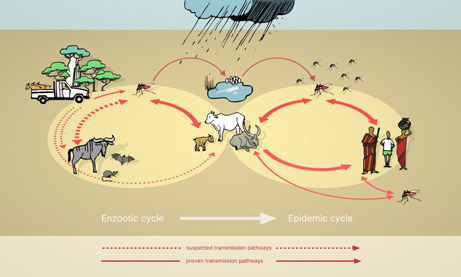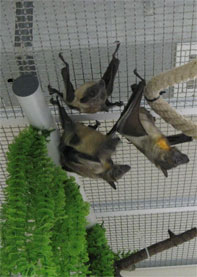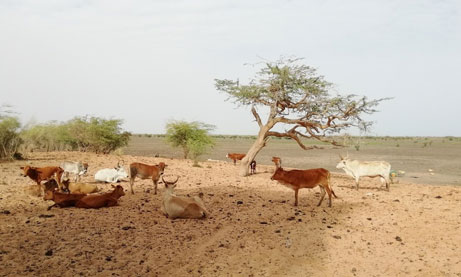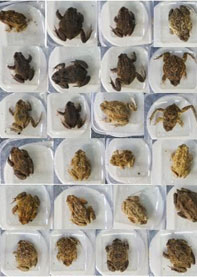Bunya and paramoyxo virus infections at the human-animalinterface between wildlife, livestock and humans in Nigeria and Cameroon. Short title: Henri
INNT
![['']](/fileadmin/FLI/Images/INNT/Projekte/Infektionskreislauf-zw-Mensh-u-Tier.jpg.png)
Project logo (© FLI)
Research Objective:
In many African countries, there is a much greater overlap between the habitats of wildlife, livestock and humans than in Europe, which favors the spread of zoonotic pathogens. Examples include urban agglomerations, where livestock markets and backyard husbandry of farm animals, as well as breeding and roosting sites of fruit bats, are located in addition to residential areas. In rural areas, domestic, pet, and wild animals may also encounter each other many times. Fruit bats are often offered and consumed as so-called 'bushmeat'. This DFG-funded study in Cameroon is therefore investigating whether fruit bats, rodents, frogs, toads and lizards can act as reservoir hosts for zoonotic bunya and paramyxoviruses (Rift Valley fever virus (RVFV) and Henipa-like virus (HNLV)).
Methodology:
Molecular and seroprevalence surveys of small ruminants (for RVFV) and pigs (for HNLV) will be conducted to identify hotspots for these infections. In addition, in areas of high infection risk, the aforementioned potential reservoir hosts will be screened for persistent or surviving infections using molecular diagnostic and serological methods. In addition, cell lines from various species such as flying fox, rodent, reptile, and amphibian species (e.g., Nile flying dog, broad-winged bat, bank vole, fire mouse, Norway rat, and clawed frog) will be infected with RVFV to provide evidence of their susceptibility. Furthermore, flying fox, rat, red vole and clawed frog species occurring in Cameroon will be infected with RVF pathogens to determine their susceptibility (including pathogenesis, course of infection, pathogen excretion). All work will take place in close collaboration with the three Cameroonian partners (Laboratoire National Vétérinaire (LANAVET), University of Yaounde 1, Centre Pasteur du Cameroon).
Involved INNT scientists:





